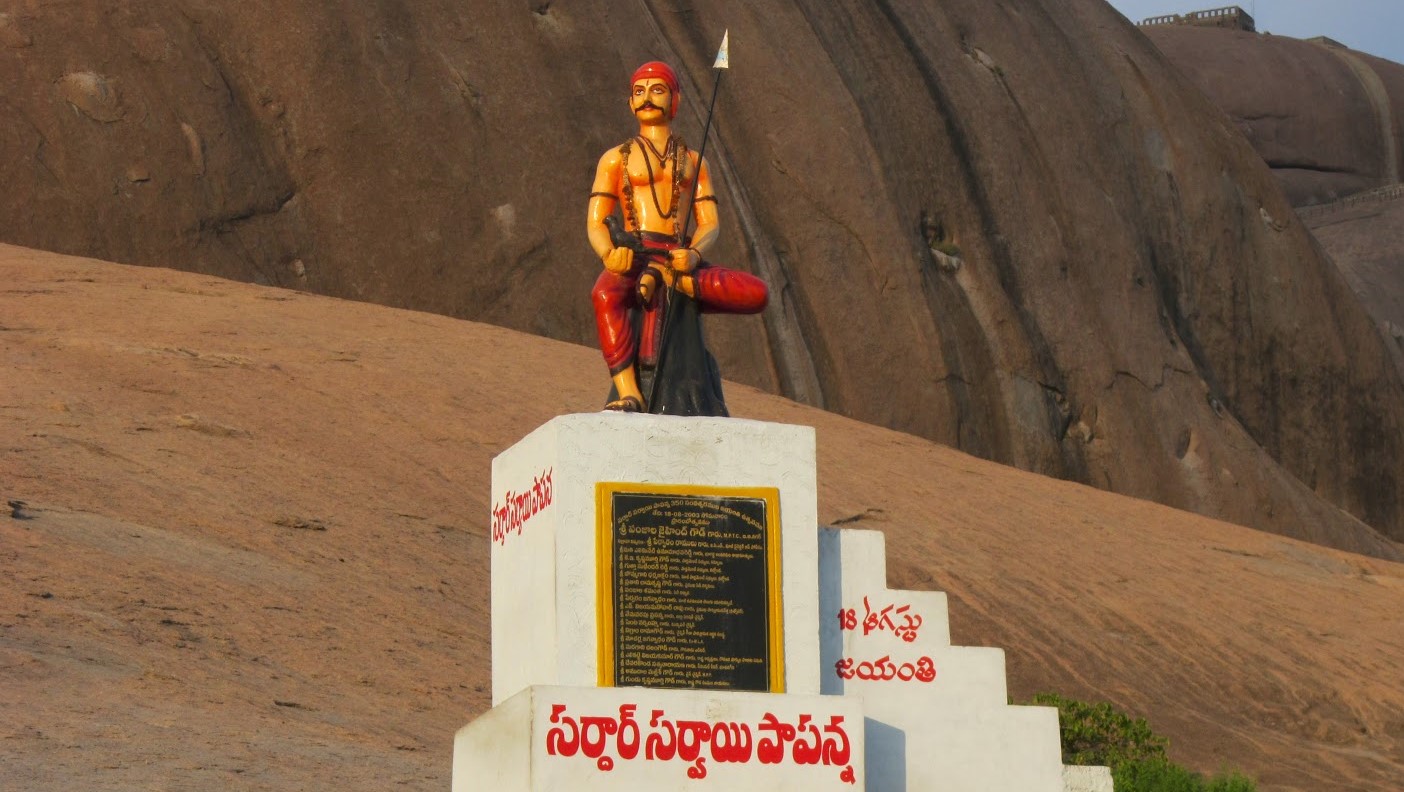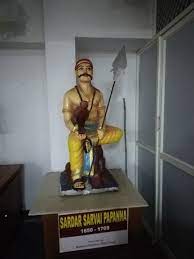Telangana is celebrating Sarvai Papanna's birth anniversary on Monday, 8 August, as a state event for the first time.

A statue of Sarvai Papanna. (Supplied)
Telangana is all set to celebrate the 371st birth anniversary of freedom fighter Sardar Sarvai Papanna on Monday, 8 August. This comes after the state government recognised his birthday as a state event last week and sanctioned Rs 10 lakh for the celebrations.
Papanna, who is locally known as “Papadu”, was a “bandit” for the Mughal and Qutub Shahi rulers, but is regarded as a hero for the Goud, toddy tapper, and Dalit communities.
According to the state government, Sarvai Papanna Goud was born on 8 August 1650 and died on 2 April 1710.
Born into a toddy-tapping family, Pappana’s heroics were passed down generations through locally sung ballads. According to American historian Richard Eaton, several toddy-tapping castes sing these ballads. He adds that these suggest that his family reached an influential position, which generally their caste did not attain.

A statue of Sarvai Papanna, (Creative Commons)
While historians like Barbara Metcalf and Thomas Metcalf have described Sarvai Papanna’s actions as “Robin Hood-like”, Richard Eaton called him a “social bandit”.
“Papanna was a great leader and he had conquered Golkonda Fort. He was the man who attacked the kingdoms and distributed the wealth to the poor,” Excise, Tourism and Culture Minister V Srinivas Goud told South First.
Not content with life as a toddy-tapper, Papanna embarked on several raids on wealthy traders with his men and imprisoned them.
He built numerous forts and recruited more people to pursue banditry. It was then the Mughal ruler Aurangzeb decided his actions were disruptive and thought of stopping Papanna.
It is said that the turning point in Papanna’s life came after a successful siege of the heavily fortified Warangal city in the early 18th century — at a time the Mughals were facing a crisis of power after the death of Aurangzeb — and captured the city’s wealthy people, and looted them.
Eaton describes the transformation this brought about in Papanna’s lifestyle.
“His style was like a raja (king). Elite bearers carried him around in a palanquin, and a guard accompanied him when mounted on a horse. If he acted like a king, he had become a landholder. He raided passing Banjaras (grain carriers) and seized their cattle. Later, he put them to work ploughing his fields for him.”
Papanna later found a friend in the new Mughal ruler Bahadur Shah I, but it was short-lived friendship as there were widespread protests by the Muslim community over a person of low caste being given so much recognition.
It is said that Papanna had abducted their relatives, because of which they were angry with him.
After facing protests, Bahadur Shah announced he would have Papanna killed.
It is said that people Papanna had imprisoned at one of his forts, including his brother-in-law, overcame the guards while he was away laying siege to another fort.
They tried to kill Papanna on his return, forcing him to leave for Tatikonda, a village in Warangal now.
However, the governor of Hyderabadm Yusuf Khan, supported by local Hindu leaders, sent his forces to kill Papanna.
“This showed that Papanna’s actions were not based on religious considerations. Those within his group included Muslims and non-Hindu tribal peoples in almost equal proportion to Hindus by the analysis of the names of his followers in the ballads sung today,” Eaton observes.
Meanwhile, Papanna’s lost many of his men as they defected to the enemy for double the pay. He was, later, captured and decapitated.
Eaton calls Papanna’s action a “dual rebellion against both imperial and local chief authority as he challenged the basic ordering of the society and that led to the mobilisation of caste and hierarchy against him”.
Srinivas Goud, MLA from Mahabubnagar, asked Minister of Backward Classes Welfare Gangula Kamalkar last week to identify a suitable place for the installation of a statue of Sarvai Papanna in Hyderabad.
Speaking to South First, Kamalkar said, “No suitable place has been identified yet, but the statue will be somewhere around Hussain Sagar Lake at Tank Bund Road.”
In June this year, Goud announced the renovation — at an estimated cost of Rs 1.26 crore — of the historic four-storey structure built by Sarvai Papanna in the 17th century at Qila Shahpur village in Jangaon district.
The stone structure, which was in dilapidated condition, collapsed during torrential rains in October last year and the ministry plans to revive its past glory and treasure its heritage for posterity.

May 21, 2024

May 21, 2024

May 21, 2024

May 21, 2024

May 21, 2024

May 21, 2024